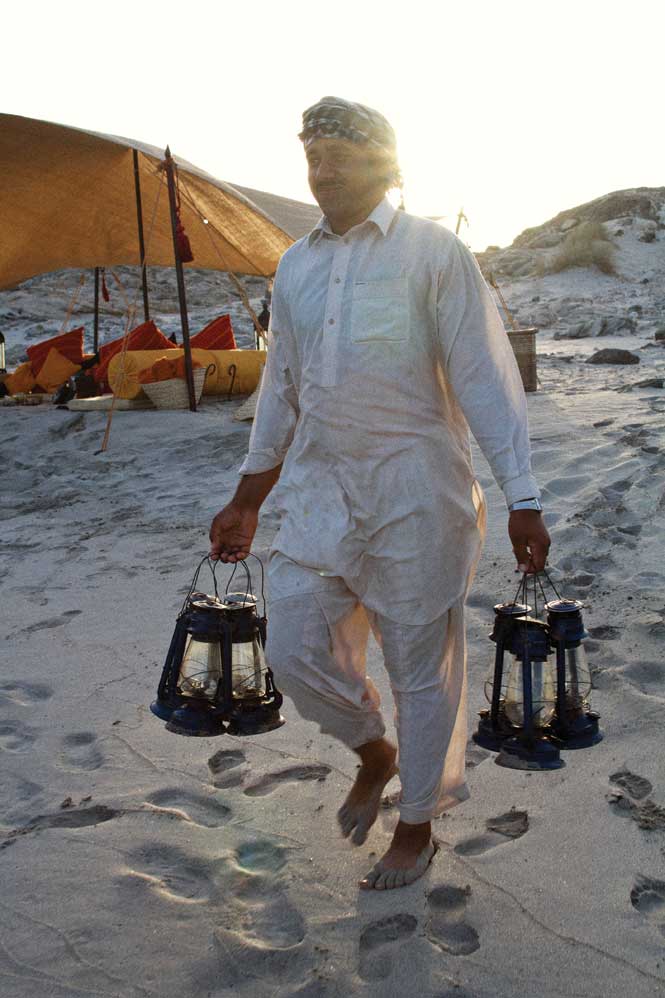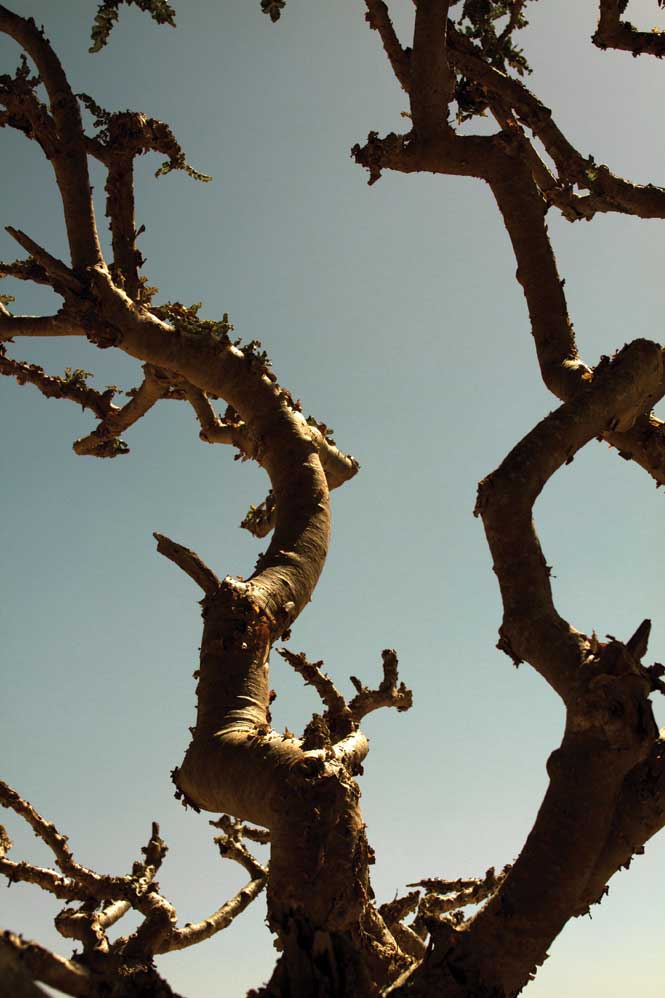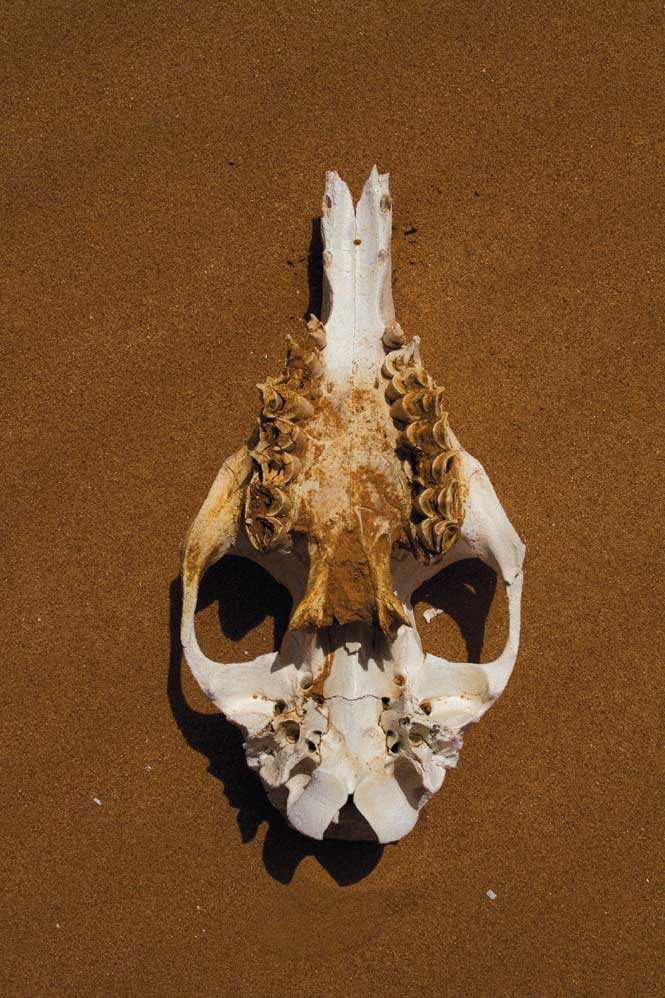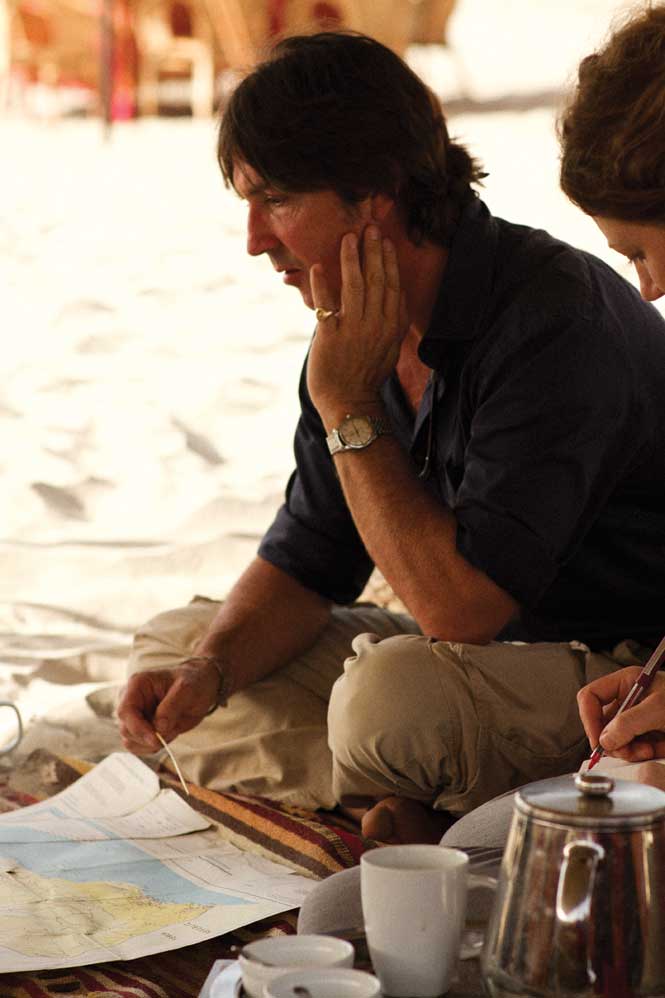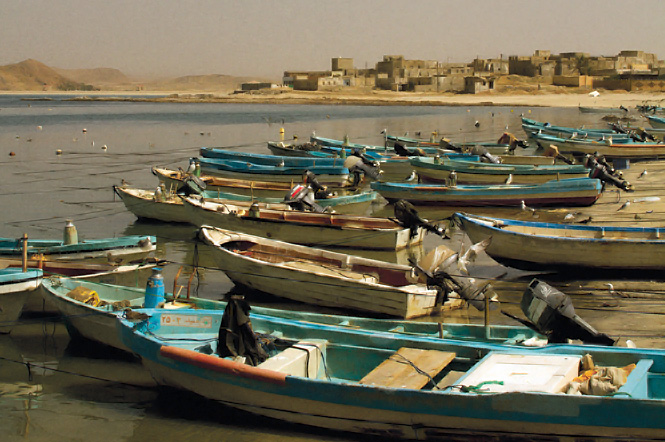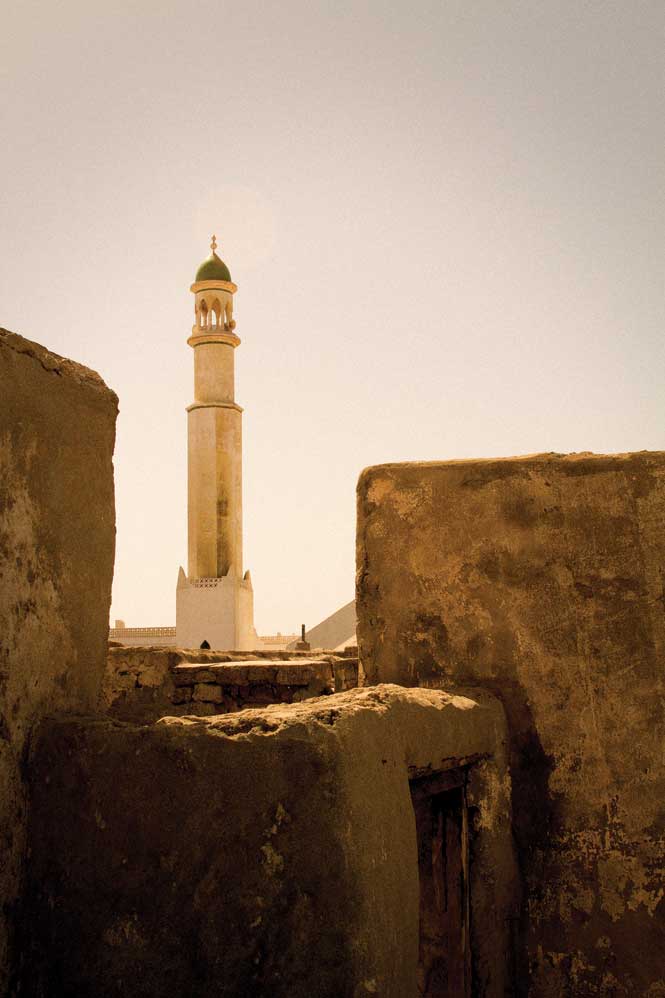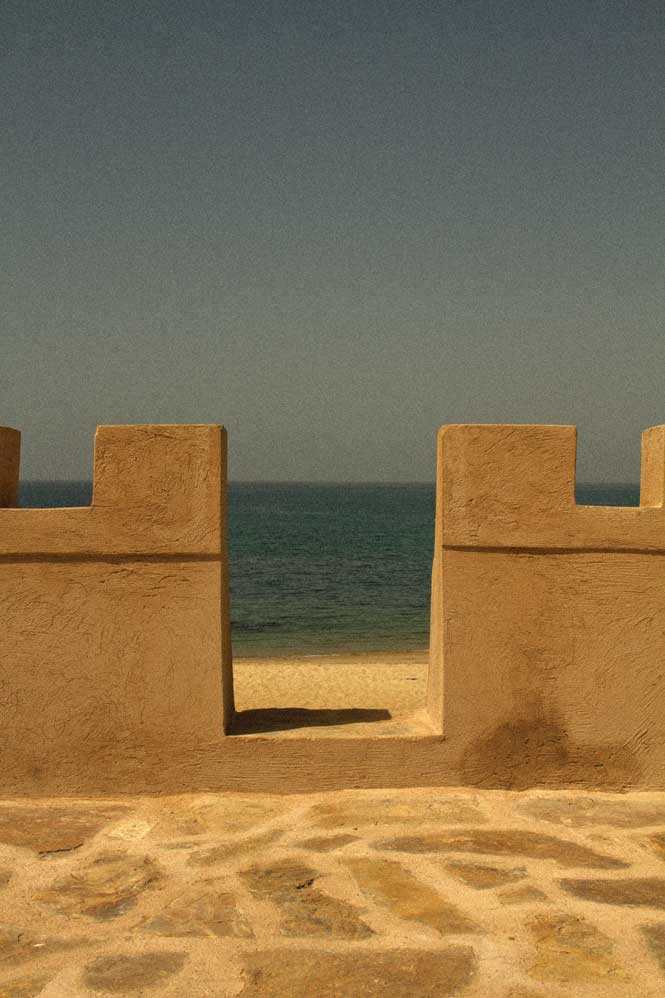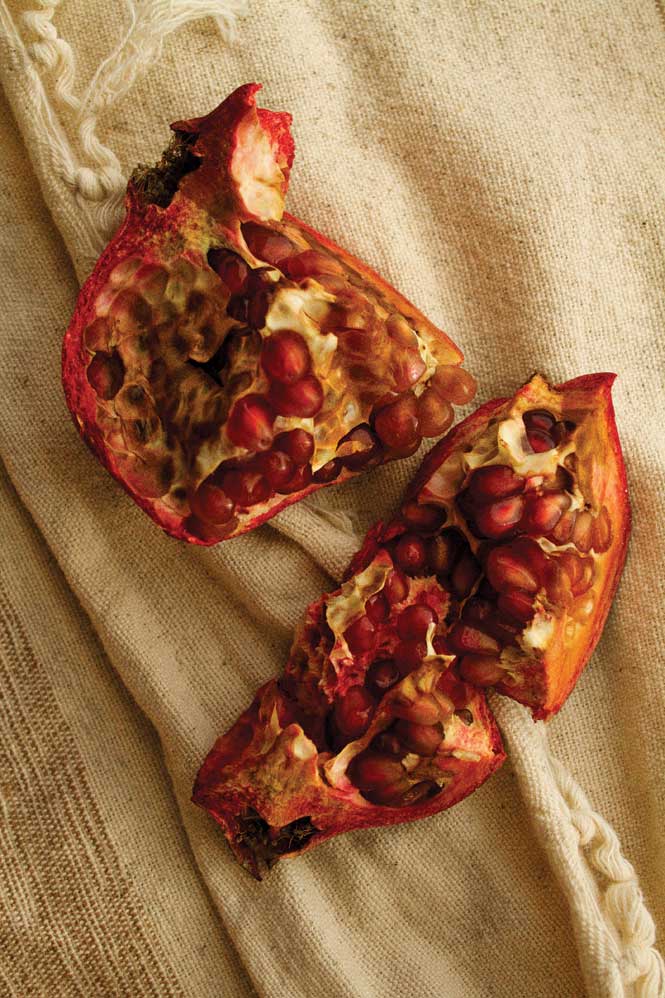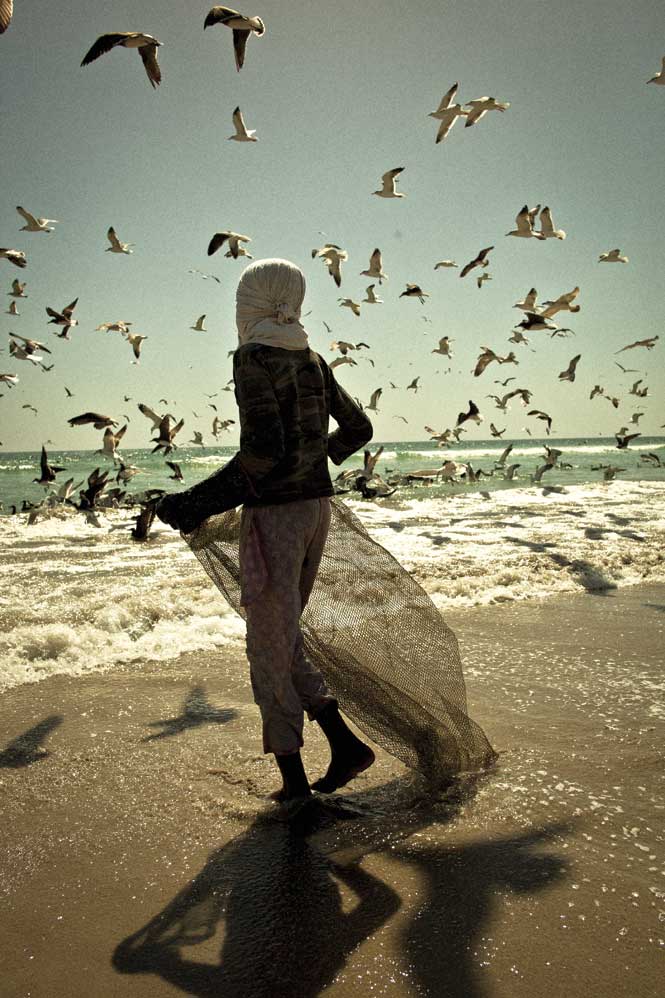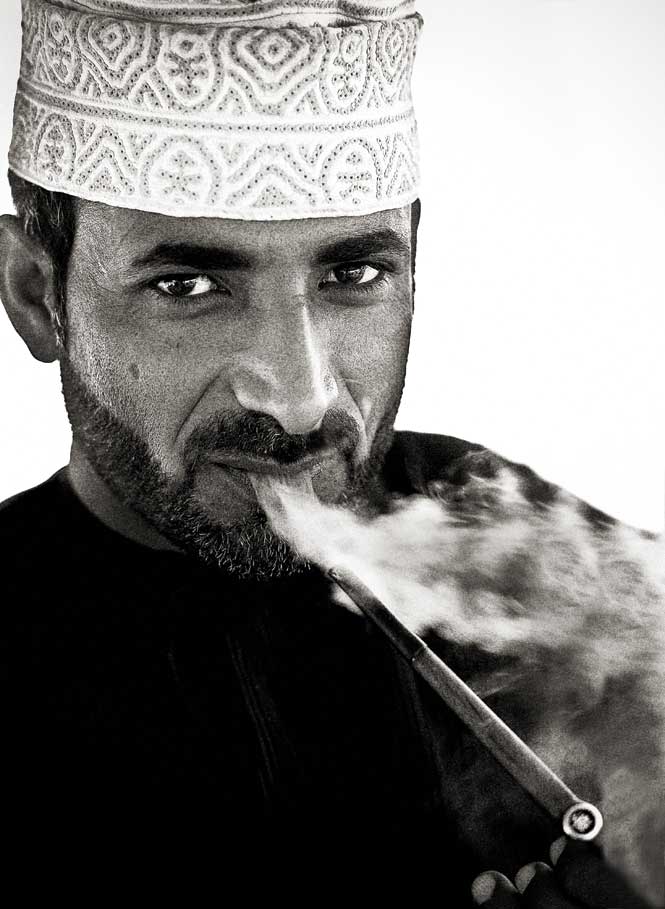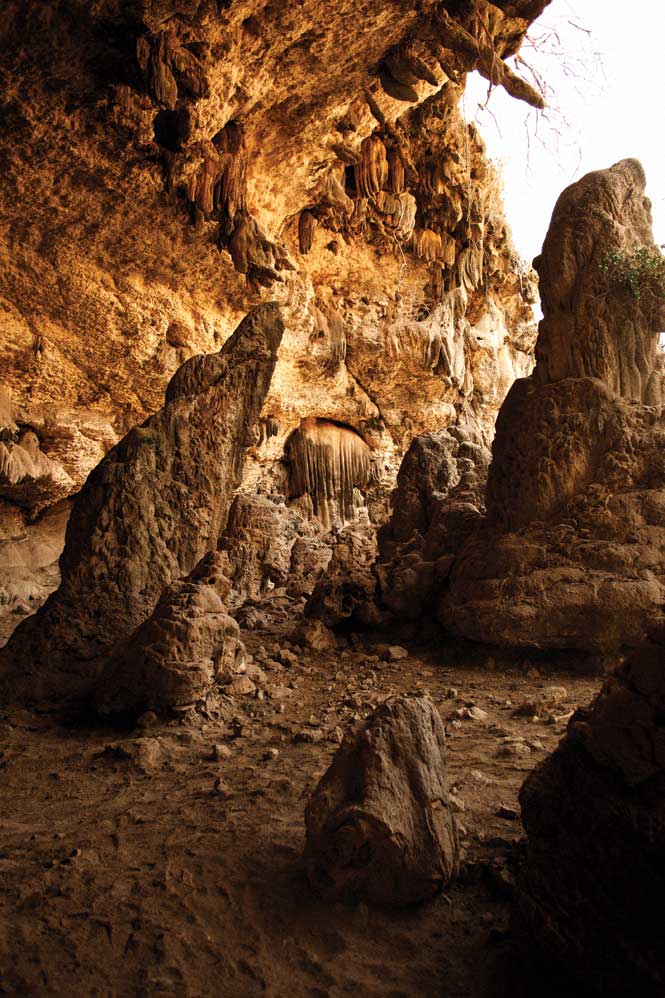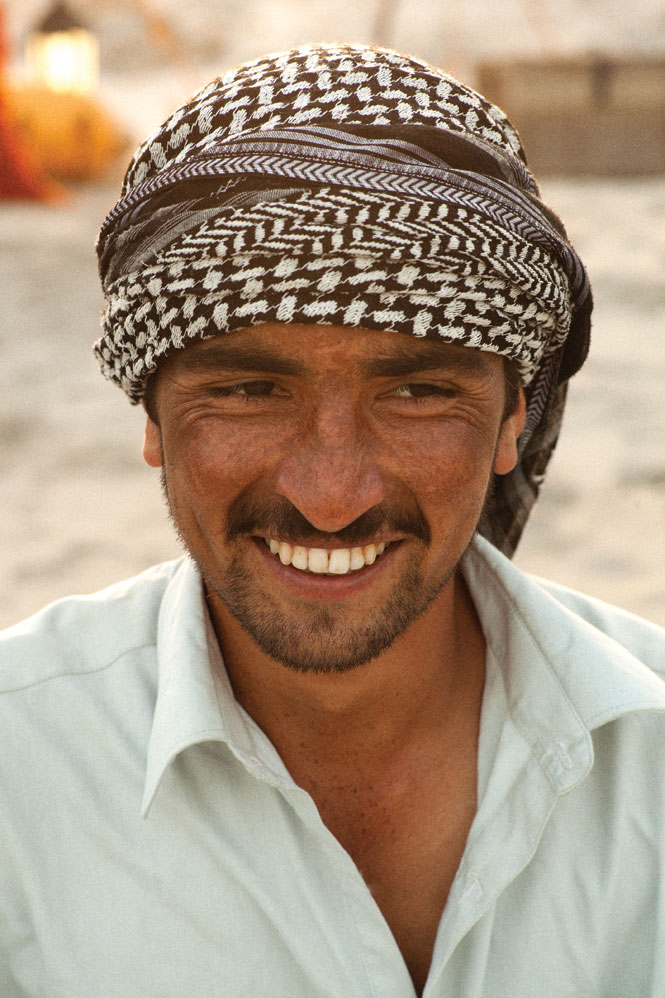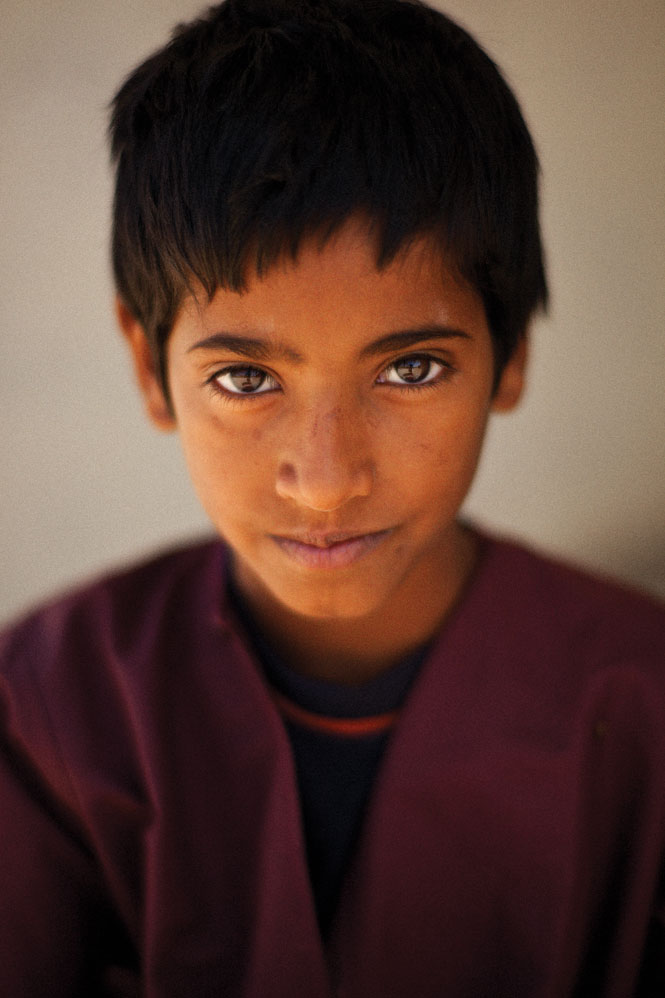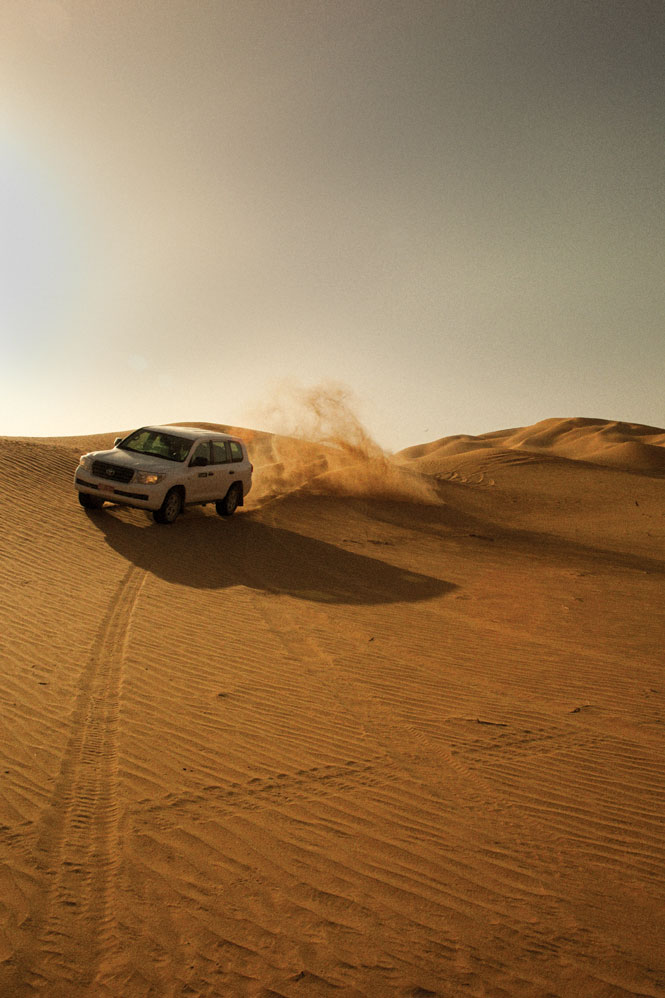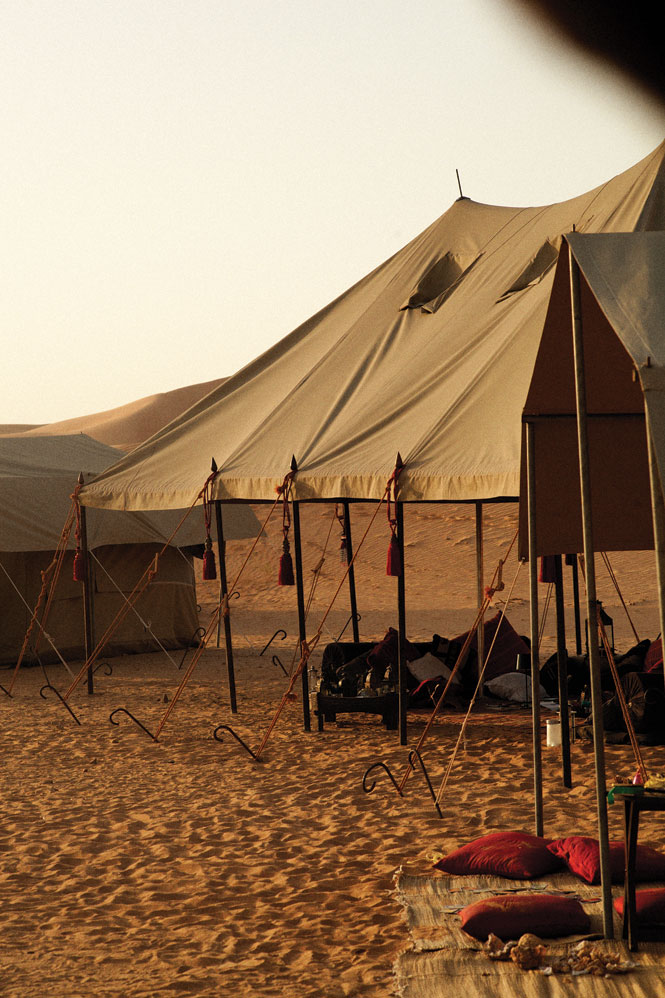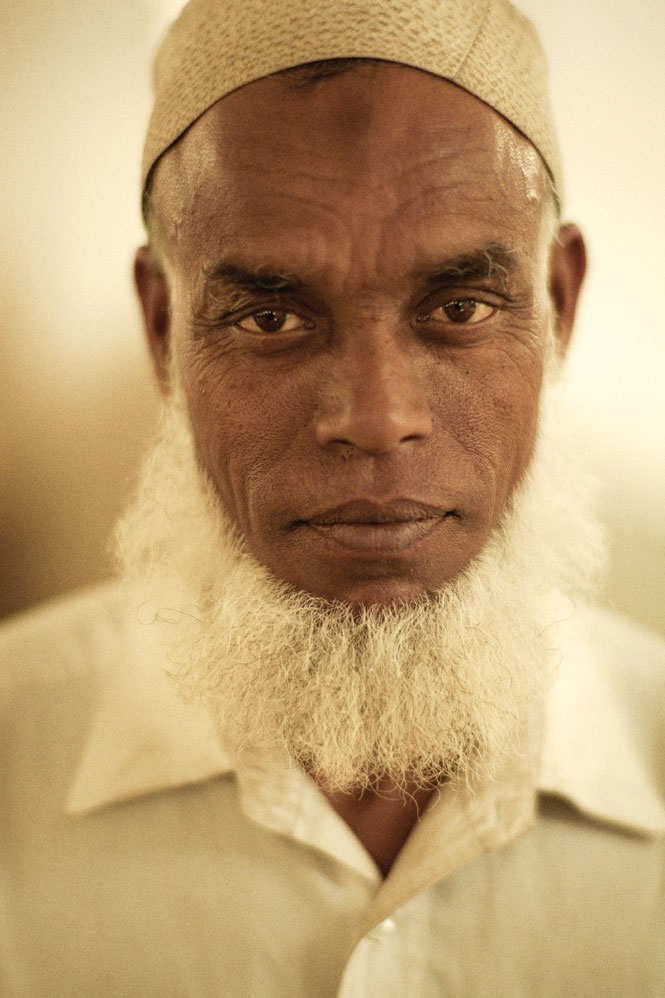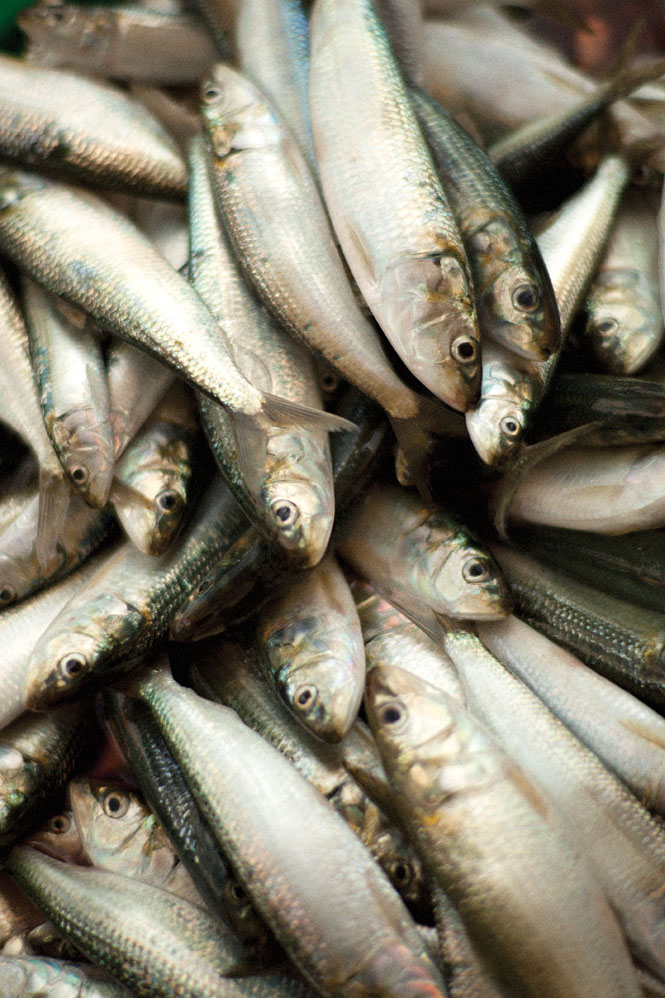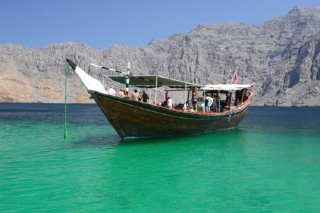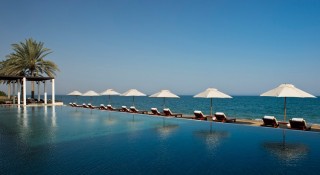Just as his eyes finally close, we pull up beside a crescent of blinding-white sand against which the Arabian Sea appears all the more turquoise.
To one side is the camp—a cluster of black, Bedouin-inspired camel-hair tents that appear starkly elegant against the rock, sand, and sky. Revived by the sight of the ocean, Danny leaps into the waves. For the next hour I watch his head bobbing in the foam under the late-afternoon sun. I go for a swim, too—the warm water feels better than any bath—before retiring to the majlis, a communal tent filled with tassels, floor cushions, rugs, and low tables where guests can play chess or sip fresh mint tea.
From here, I watch the camp’s gentle rhythm take hold. Soon a fire is burning in a pit around which the sleeping tents are positioned, each equipped with a handsome double bed and solar-heated shower. Our Keralan chef, Roy, is busy roasting a lamb; the rest of the camp staff light scores of lanterns, which glimmer like stars as the sun sinks lower in the sky. It’s captivating; I feel like I’ve entered the secret heart of Arabia—and this is just the beginning of our journey. Over the next five days, we will travel across the Dhofar region into the Omani portion of the Rub’ al Khali, or Empty Quarter, the largest sand desert in the world. The tents and staff will move with us, caravan-style, with English-speaking guides smoothing out logistics en route.
None of this comes cheap: Hud Hud charges about US$1,000 a head per day depending on the itinerary you’re after and the number of people in the party (ours consists of four adults and four children). As to whom this type of holiday might appeal to: a British rock star was just finishing his fourth tour with the company on the day we flew in to Salalah. A Swiss tycoon was another recent guest—12 travelers, four chefs, the camp’s location changing each night over the course of a week—along with a smattering of Rothschilds.
Privacy is one of the experience’s most obvious lures. But to deliver the kind of polish expected by this sort of clientele requires considerable expertise, which is what 49-year-old Englishman Sean Nelson has been busy perfecting ever since he founded Hud Hud Travels in 2007.

